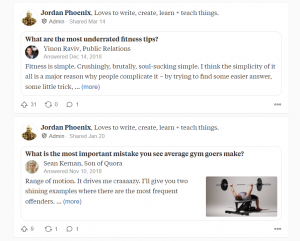Salesforce Data Cloud is raining personalized experiences on Principal Financial Group’s B2C and B2B2B businesses.

Salesforce’s Marc Benioff believes that 2025 will be the year of Data Cloud. In one sense, this might be seen as celebrating the end (or nearing the end) of a very long journey. Salesforce tried to create a viable CDP, under various names, for at least five years.
And now we have Data Cloud, threading together data from across the Salesforce suite (Marketing Cloud, Sales Cloud, Service Cloud), able to pull data from external sources and, perhaps most significantly, able to reach into data warehouses like Snowflake and Databricks and activate brand data from those deep wells.
In that sense, this could be the beginning of a new journey, putting Salesforce in pole position if brands are really intent on abandoning apps-plus-data-siloes for an architecture in which (largely) data-free apps sit on the IT-run organization-wide data warehouse or lake. That’s the future, some say.
But how are customers actually using Data Cloud, and what benefits are they drawing? We spoke with Ryan Downing, VP and CIO of enterprise business solutions at Principal Financial Group about Principal’s ongoing Data Cloud journey.
Principal’s business models
“Principal is a Fortune 500 company and we just celebrated our 145th anniversary,” said Downing. Before understanding how Principal is using — and intends to use — Data Cloud, it’s important to understand the multiplicity of audiences it serves.
“Our business model is mixed,” Downing explained. “We have three main business units. We have a global asset management business, we have a retirement business that operates in the U.S. and we’ve got a benefits and protection business that operates in the U.S. as well.”
Principal is the third largest provider of defined contribution plans, 401Ks, he went on. “That model is very much a B2B model; honestly, it’s almost a B2B2B model, where you’ve got an adviser, an intermediary, consulting with businesses as they’re choosing a provider for the 401K for their employees.”
There is also a group benefits business, including things like vision, dental or disability. “A similar sort of model,” said Downing, “but within that, once the employer chooses Principal, their employees all become customers of Principal. That’s where the B2C aspect of things comes in and how we create experiences for those people to achieve financial security. Helping businesses and their employees together is how we think about that.”
Deploying Data Cloud
“We really started first with the adviser audience,” Downing said. “We’re now moving into the individual employees, or participants. For these use cases we’re actively looking at bringing data together. The employer audience will be the next one we’re working through.”
Principal is taking a hybrid approach in terms of where the data is held. “There are places where we are ingesting data [into Data Cloud], but one the value propositions we saw with Data Cloud was that there was zero-copy data integration capabilities. Our enterprise data foundation is built on Snowflake and we’re continuing to build that out, so that was a really appealing aspect of things: to leverage the investments we’re making in data, not just for customer experience, but to run and operate our business holistically.”
What came before Data Cloud? “I think it was a mix of solutions,” said Downing. “We have had internal data platforms. We’ve had other tools in the marketing technology stack, things like Salesforce Marketing Cloud. In the different channels, we would apply levels of personalization at a much smaller scale.”
Downing expects to use Data Cloud to evolve customer experiences across Principal’s businesses in a more consistent and connected way. That’s not an overnight transition, of course. “We’ve been at this for probably about 18 months,” Downing told us. “We haven’t really started on the employers yet; we’re focused on the advisers and the employees. The key thing we’re trying to drive is personalization in the customer experience and we think those audiences represent the most value for that.”
Examples of activations
We asked about actual use cases for these developing capabilities. “Within our Principal asset management business, a lot of work we’re doing is with advisers to help them have the right investment options for their clients. We’ve been leaning into our web channel to really personalize the content they are seeing, using data we have about that adviser and their business to say, here are the things that would serve their customers best.”
For individual participants, personalization means not just helping them understand their 401Ks, but supporting their overall financial wellness goals. “We have content that is advice-based,” said Downing, “and we want to personalize what people are getting to what their needs are based on where they are in their lives.”
Engagement with individuals goes beyond the web channel, of course. “Email is important, mobile is important. What we can’t lose sight of is that decisions about retirement, for example, require some sort of human interaction.” The aim is to make the digital experience personal and relevant while also making the hand-off to a human, when it becomes necessary, as seamless as possible.
The vision is to provide the human with all the information they need to help that customer. “We haven’t gotten to all the channels yet, but that’s very much the vision of how we think about this.”
Calling Einstein
Data Cloud, like the rest of the Salesforce suite, uses Einstein AI. Is that something that just operates under the hood and makes things work smoothly, or is Principal conscious of its operations?
“It absolutely has to be front and center,” Downing said. “We’ve been leveraging artificial intelligence for many years. The advances in generative AI over the last couple of years have been tremendous and provide amazing opportunities. You have to be actively engaged in governing that. You have to be actively engaged in tuning those models so that they are providing the right responses and answers for your customers and your business. You continue to train those things, providing more and more data to round out the knowledge base that it has access to.”
As part of a regulated industry, Principal needs to balance using AI to add value for its customers with an understanding that guardrails are needed to minimize risks. “When we provide financial advice to customers, we have to be able to attest to why we gave that advice and be able to demonstrate why that was in their best interest. Generative AI doesn’t provide that level of explainability. You have to be very mindful of where you can apply it and where you can’t.” Keep a human in the loop is the advice.
The post How Salesforce Data Cloud supports CX for Principal Financial appeared first on MarTech.
(8)
Report Post







